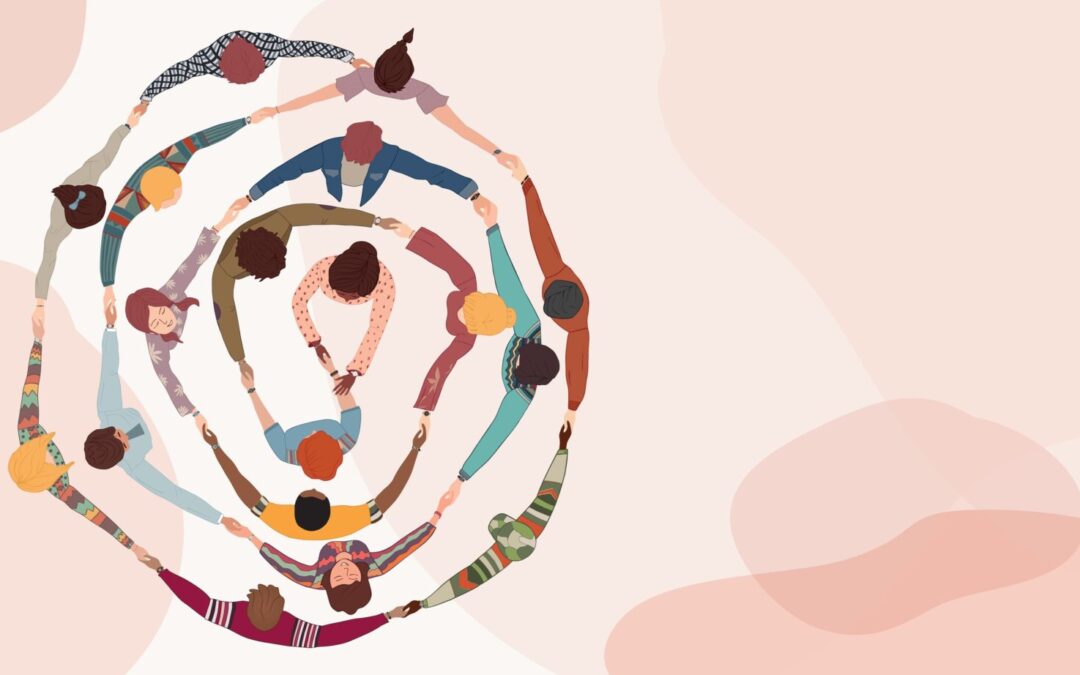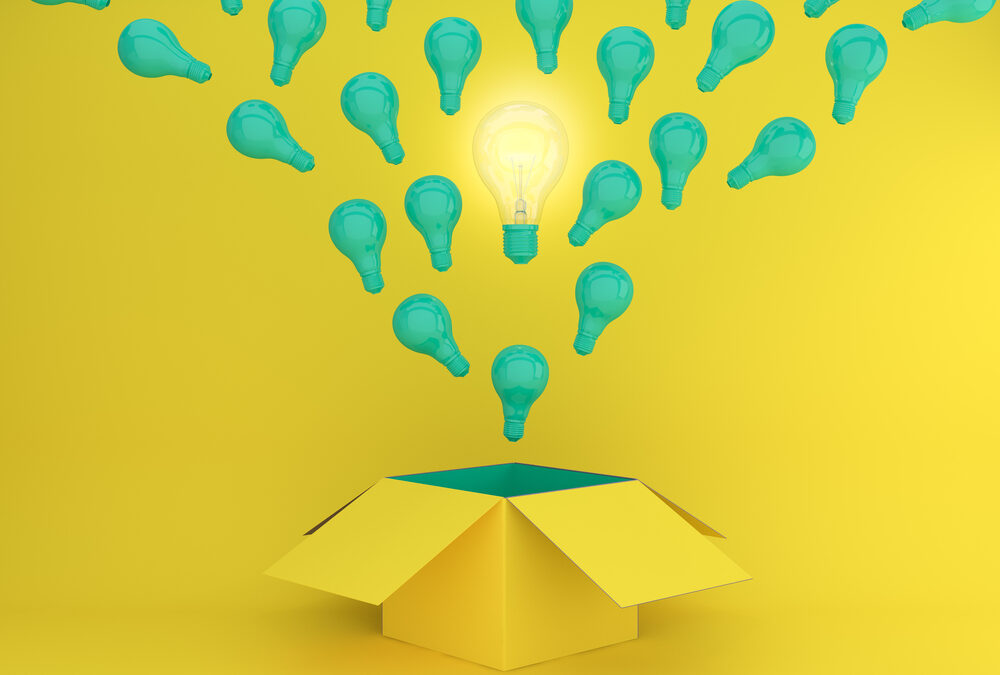
by American Business Women's Association | Feb 14, 2024 | Blog, Business, Uncategorized
To view the complete video, “WHY I JOINED ABWA” – Click the link and/or copy and paste the link into the internet search field: https://youtu.be/iqHYOG_rmcg
About ABWA Member, Dr. Ka’Ryn Holder-Jackson
Dr. Ka’Ryn Holder-Jackson is a dynamic innovative business executive; her expertise is leadership training and development, strategic planning, and organizational development. An articulate, diplomatic, interpersonal communicator with an uncommon ability to influence, motivate, inspire, and communicate with diverse constituents,
A native of San Francisco, she is a graduate of San Francisco State University, where she earned a Bachelor of Science in Psychology, the University of Phoenix, where she earned a Master’s of Business Administration and Capella University where she earned a Doctorate in Human Services.
Ka’Ryn presently serves as the Executive Director of ACCEL San Mateo County Adult Education Consortium where she leads a Ka’Ryn leads a coalition of regional education, training, business and industry partners bridging the gap between employer demand for an educated and skilled workforce and the supply of workers with the necessary skills for a 21st century labor market.
As a former Associate Director for the American Diabetes Association, San Francisco Bay Area, Ka’Ryn received honors as the recipient of a Certificate of Special Congressional Recognition in 2015 from the Honorable Barbara Lee 13th Congressional District of California, In Recognition of Dedication to Educating the Community About Diabetes & the Importance of Health Care.
Ka’Ryn has over 20 years’ experience serving in Executive Management in corporate, for profit, not-for-profit, non-profit, and education Sectors. She is the CEO of A’Ryze Consulting; a Certified Executive Coach, Speaker, Trainer, Corporate Facilitator, and has over 20 years’ experience in the financial services industry and is a licensed financial services representative.
Awards & Recognition:
- 2023 Top Ten Business Woman, American Business Women’s Association
- 2019 Woman of Distinction, American Business Women’s Association
- 2018 Commendation Board of Supervisors of San Mateo County, California
for Leadership in our Communities
- 2015 Certificate of Special Congressional Recognition from the Honorable Barbara Lee 13th Congressional District of California, In Recognition of Dedication to Educating the Community About Diabetes & the Importance of Health Care.

by Rene Street | Jan 10, 2024 | Uncategorized
5 Steps To Turn Negative Thoughts Into Positive Actions
Do you have a Negative Nancy (NN) or Toxic Tim (TT) that you’re keeping longer than you should? Would you let them go if you weren’t so short staffed? One Negative Nancy or Toxic Tim infiltrates the whole company and it spreads throughout, affecting everyone.
Think of it like this: You attend a meeting that NN was in. When you leave, you approach Positive Polly and share with Positive Polly, “It’s so frustrating dealing with NN. Why is she still here? All we do is constantly listen to her babble and unhappiness.” Before you know it, you become a Negative Nancy, and Positive Polly sees the impact the original NN has made on you and the team. It only takes one person thinking negatively to bring the whole environment, culture, and team down. In order to help you, Positive Polly shares the following.
You have 60,000 thoughts a day and 80% of them are negative. These come in the form or doubt, worry and stress and are linked to poor attitudes, declining engagement, and poor performance. Most people think they are positive and optimistic, yet negativity shows and they don’t recognize it. In fact, 95% of your thoughts are repetitive. So, all of the negative thoughts keep getting repeated, impacting how you show up, speak out, lead, and live.
Your thoughts are the fundamental foundation of everything you do and everything you don’t do, yet often times you don’t think about them. When was the last time you thought about what you thought about? If you’re like most people you think the same way you’ve always thoughts, resulting in the same behaviors, actions, and results. If you want to change relationships, communication, interactions, your confidence, you must first change how you think. Once you change that, then everything else will change as well.
Here is a five-step process to help you change your thoughts to invoke different actions, behaviors and results and develop a positive work environment.
ONE: Identify – Recognize Your Thoughts. There’s an exercise to help you very specifically identify your negative thoughts. It’s called the Stand up/Sit down exercise. This is a great exercise to do as a team. Have someone read a set of statements. For every statement you agree with, you will move your body. Everyone starts in a stand-up position. For example, if the first statement is “If you’re ever thought you’re not smart enough,” and you agree, you’ll sit down. If you disagree with the statement, you’ll remain as you were. If the next statement is, “If you’ve ever thought you don’t have enough time,” and you agree, you’ll move (either stand up or sit down depending on what you did for the first statement). This repeats for every statement read (there should be about 15 statements read). During this activity, you can expect to hear laughter evoke from your group, as they are moving for most of them, which shows that negative thinking arises without you consciously knowing. And you have a lot more of them than you believe.
TWO: Write It. Once you’ve identified your negative thoughts, it’s important to write them down. Something happens in your brain when you write things down. They tend to become real, and you remember them more. So, when you write down your negative thoughts, you become more mindful when they arise. Follow the rest of the process with just one of your negative thoughts. Once you have mastered one, work on another (you don’t want to overwhelm you or burn you out on doing too many at once).
THREE: Triggers – What are your triggers for your negative thinking? Triggers can be a place, situation, mood, experience, or thing. If you’ve ever had a conversation with someone and walked away saying to yourself, “Why do I even bother,” then you also know a trigger can be a person too. And many times, it is a person. Write down all of your triggers. When you’re aware of your triggers, you can be on the lookout for them. When they come up, as they will, you are armed to not allow the negative thoughts to follow.
FOUR: Reframe – List all the ways to reframe the negative thought. There are two ways to do this reframing. First, you can say the opposite of the negative statement. Instead of staying I’m not a good enough leader, you can say, “I’m an awesome leader.” The second way is to ask questions. For instance, what courses do I need to take to become a better leader, what leadership book should I read to improve my leadership skills or who can mentor me into being a better leader. Your brain is constantly talking to. If you say you’re not a good enough leader, your brain will validate it with all the ways that it’s true. If you say you’re an awesome leader, your brain will validate it with all the ways that it’s true. So, listening to the positive part of your brain will make all the difference in your work and life.
FIVEl Action – Once you have your reframing options, pick one to take action on. Nothing changes until you take action on it. Small action makes a huge difference. If you want to know the best leadership book to read, you may initially think you do not know any, however, your brain can solve that dilemma. It’ll reply with ideas to look up leadership books on Google, put a post on Facebook asking your friends for their recommendations or look up Amazon book reviews. Then it’s time to decide which action you will take (which book to order and order it). Small consistent action is key to eradicating negative thinking.
The more you work through this process the more positive thoughts you have. You’ll soon recognize negative thoughts in others and can help them master their own mindset. You’ll become the Positive Polly and help develop a positive work environment that no one wants to leave.
About the Author:
Jessica Rector, MBA, author of the #1 best-selling “Blaze Your Brain to Extinguish Burnout” and nine other books, helps organizations, leaders, and teams Say Yes to eradicate burnout and enhance mental health. As a burnout trailblazer, her research is used in her consulting and speaking and often shared on her podcast, “The Say Yes Experience.” For how Jessica can help your organization and team, go to www.jessicarector.com

by American Business Women's Association | Jul 17, 2023 | Blog, Business
When we think about famous visionary thinkers, we subconsciously assume that they have some magic characteristic that the rest of don’t have or can’t achieve. But in reality, the only magic they have is an intuitive understanding of how to avoid some very common creative thinking blocks. One of those blocks is the Curse of Knowledge, a cognitive bias, or mental shortcut, that all humans share.
Stuck Inside the Box: The Curse of Knowledge
You’ve probably heard the term “Thinking outside the box.” And you’ve probably, at some point in your career, been asked the think outside the box. But without any understanding of why the box is there or how it was created, it’s hard to know how to break out of it. The reality is that we each create our own “box”, through this Curse of Knowledge.
To understand this concept, imagine for a moment that your task is to think of new ideas for salad dressing. Try to come up with a few in your mind right now – don’t skip ahead!
Chances are, the ideas that came to your mind were incremental variations of existing flavors or ingredients. You may have thought of fruit-flavored dressing. Or spicy, chipotle dressing. Or perhaps dressing that’s flavored like your favorite cocktail. Or your favorite dessert.
All really interesting ideas, IF you are only looking for ideas that don’t change the current nature of salad dressing, nor the way it’s currently manufactured, packaged, sold, or used. The task was to find NEW ideas for salad dressing. That challenge was not limited to simply new flavors, but your brain likely limited your thinking to mostly just new flavors.
Here’s why incremental ideas tend to be the first, and sometimes the only, kind of ideas to emerge. All humans rely on past knowledge to subconsciously try to shortcut problem-solving. We instantly – and subconsciously – call on everything we know from the past to come up with solutions for the new problem. While this ability to call on past learning is an incredibly useful trait in many situations (it’s one of the reasons we’re at the top of the food chain), when you’re looking for new ideas and solutions, it actually becomes a significant barrier. It limits your thinking to nothing but slight variations of what already exists.
The minute you saw the words “salad dressing”, your brain made a bunch of instantaneous assumptions that you’re likely not aware of. Those assumptions were probably things like:
- Salad dressing comes in a bottle.
- It’s liquid.
- It’s stored in the refrigerator.
- It’s used on lettuce.
- Salad is eaten from a bowl or plate.
- Salad is eaten with a fork.
Using the salad dressing challenge again, now assume one of the above “facts” does NOT have to be true. What ideas could you come up with then? You might think of ideas like:
- Salad dressing that you heat in the microwave (not cold).
- Dressing for fruit, or for meat (not used on lettuce).
- A powder whose full flavor is activated when it contacts the moisture of the lettuce (not liquid).
- Salad dressing in the form of a wrap, so you can eat the salad on the go (salad isn’t served on a plate).
- Salad dressing in the form of an edible skewer (salad isn’t eaten with a fork).
As you can see, the nature of the ideas that arise after crushing the imbedded assumptions is dramatically different from the ideas that came before. That’s because your brain is no longer limiting your creativity with artificial guardrails that may not actually exist and that you weren’t even consciously aware of.
Interestingly, the more expertise you have in an area, the more of these limiting assumptions you have subconsciously imbedded in your thinking. So, as an expert in your field, you likely have MANY imbedded assumptions that you’re not aware of, but that are likely impeding your creative thinking in a significant way.
The Cure: Assumption Crushing™ Process:
Fortunately, there is an antidote to the curse of knowledge. Assumption Crushing™ is a technique that involves consciously surfacing and challenging our hidden assumptions.
Assumption Crushing™ Step 1: Surface your subconscious assumptions by generating a long list of statements that start with things like:
- Well, in our business everyone knows…
- We have to…
- Our product is/does/has…
- Well, of course …
- We could never…
Be sure to list some really obvious, superficial, or seemingly trivial “facts,” observations, processes, etc. Sometimes breaking the obvious ones can lead to the most innovative ideas. For example, the fact that salad dressing is liquid seems fairly trivial. But breaking that assumption led to some truly breakthrough ideas.
Assumption Crushing™ Step 2: Once you’ve come up with a long list, pick one that may not have to be true, and start to think of new ideas based on breaking that one. Then pick another and do it again. And again. You’ll amaze yourself with the innovative ideas you come up with.
Remember that the Curse of Knowledge is based on experience and expertise. Many people often assume that the best way to get new thinking, new ideas, and new solutions is to bring together a bunch of experts on the topic. But the reality is that all those experts will have a very similar set of subconscious mental frameworks. (They’ll all have essentially the same Curse of Knowledge.). A better way to generate new ideas is to invite a few experts, and then several other people with different experiences, knowledge, and perspectives. Those non-experts will help force the experts to confront and overcome their curse of knowledge.
The Curse of Knowledge is a formidable adversary that exists in our brains all the time and hinders our visionary potential. By embracing Assumption Crushing™, we can shatter the chains that confine our thinking and unlock the path to visionary breakthroughs.
About the Author:
Susan Robertson empowers individuals, teams, and organizations to more nimbly adapt to change, by transforming thinking from “why we can’t” to “how might we?” She is a creative thinking expert with over 20 years of experience speaking and coaching in Fortune 500 companies. As an instructor on applied creativity at Harvard, Susan brings a scientific foundation to enhancing human creativity. To learn more, please go to: SusanRobertsonSpeaker.com.






